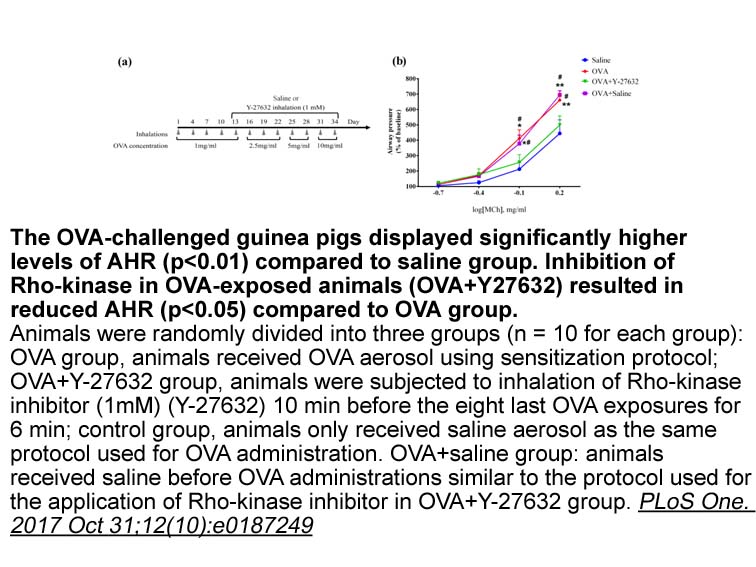Archives
atp 4 DDR has been reported to
DDR1 has been reported to promote invasion in a variety of human cancer cell lines, including prostate, breast, and lung [26], [27], [28]. DDR1 is thought to upregulate atp 4 of MMP components such as MMP-2 and MMP-9, resulting in degradation of matrix components [29]. Although there exists scant evidence concerning DDR2, the DDR2 mutation S131C promoted proliferation, migration, and invasion by lung SQCC cells, and these processes were mediated by induction of MMP-2 [12]. Reduction of DDR2 by siRNA inhibited the induction of Epithelial-Mesenchymal Transition (EMT) by TGF-β1 [30]. In breast cancer, DDR2 stabilizes SNAIL1, which is transcriptionally regulated by TGF-β, resulting in induction of EMT [31]. In our results, EMT phenotypes including SNAIL1 expression, down-regulation of E-cadherin, and up-regulation of Vimentin, were not induced by ectopic expression of DDR2 (data not shown). These results suggest that the DDR family, including DDR2, is involved in tumor progression, although the mechanism varies according to cancer cell type.
induction of Epithelial-Mesenchymal Transition (EMT) by TGF-β1 [30]. In breast cancer, DDR2 stabilizes SNAIL1, which is transcriptionally regulated by TGF-β, resulting in induction of EMT [31]. In our results, EMT phenotypes including SNAIL1 expression, down-regulation of E-cadherin, and up-regulation of Vimentin, were not induced by ectopic expression of DDR2 (data not shown). These results suggest that the DDR family, including DDR2, is involved in tumor progression, although the mechanism varies according to cancer cell type.
Conclusions
Overexpression of DDR2 might contribute to tumor progression in lung SQCC, and the T681I mutation we found in this work is an inactivating mutation. There is a possibility that not only activating mutation but also overexpression of DDR2 might be a molecular target for treatment of lung SQCC, and assessing that is a subject for future research.
Conflict of interest statement
In a recent issue of Journal of Molecular and Cellular Cardiology, George et al. [] examined the regulation of discoidin domain receptor 2 (DDR2) expression in cardiac fibroblasts by angiotensin II (Ang II) and its functional link with fibroblast collagen production. Myocardial fibrosis is an underlying pathological feature in common with the development of irreversible heart failure due to several pathological etiologies. Clinically, fibrosis is characterized by the accumulation of extracellular matrix (ECM) proteins leading to a stiffening of the left ventricle (LV) and subsequent decrease in LV function , , , . In the non-diseased myocardium, ECM deposition surrounds the myocytes and provides structural integrity. In response to pathology, ECM production robustly increases , . Although fibrosis is linked to the development of heart failure, its relation to the pathophysiology of chronic pressure overload is not fully understood. Recent evidence has implicated the renin–angiotensin system in the progression of myocardial fibrosis as elevated levels of Ang II are associated with myocardial fibrosis in patients and animal models of atherosclerosis, hypertension, cardiac hypertrophy, and heart failure , , , .
DDR2 is a tyrosine kinase collagen receptor expressed by multiple cell types (e.g. smooth muscle cells, osteoblasts, and fibroblasts) and is associated with pathological scarring of multiple organs, including the liver, lung, and pancreas , , . Nevertheless, the functional role of DDR2 in the myocardium remains unclear. George et al. present evidence that Ang II acts via protein kinase C to trigger p38 mitogen activated protein kinase (p38 MAPK)-mediated activation of nuclear factor-κB (NF-κB) leading to enhanced DDR2 transcription and collagen production in cardiac fibroblasts . The authors do a wonderful job determining the mechanism behind Ang II induced upregulation of DDR2 in cardiac fibroblasts. In addition, their result indicates that DDR2 acts as a positive modulator of collagen production highlighting a need to understand DDR2 in the progression of cardiac fibrosis in order to identify appropriate prognostic and therapeutic targets along the fibrosis continuum.